Activity based workplace design
22 Dec 2025
Published on:
29 October 2019
Updated on:
29 April 2025
Read time:
Forward-thinking companies recognise the value of intentionally designed offices that create meaningful and functional workspaces for employees with different personality types.
It is widely acknowledged that the environment impacts cognitive function. Consequently, everyone performs differently in relation to the workspace they are in.
Workplace designs should focus on improving productivity and employee satisfaction. Today there is a renewed focus on creating flexible, or agile offices, that feature a variety of work zones and accommodate the five major personality types and allow employees to change their environment in relation to the task they are performing.
A recent collaborative study between the University of Bath, Bath Spa University and Atkins, observed the psychological aspects of workplace design. The findings revealed that office designers should consider social and spatial density, visual cues including views and sound levels.
Workplace design is complicated by the fact there is no one size fits all approach. Furthermore, one source says there is insufficient evidence to show different personality types respond differently to the office environment in terms of distraction, job satisfaction and performance.
However, other studies have found the environment can impact performance and job satisfaction in employees that are performing specific activities. Common sense and personal experience confirms this is a true reflection of workplace environments.
Ultimately, it is regarded that different personality types have preferred ways of working. Whilst some people thrive in open-plan offices, others prefer single space offices.
A combination of both is the solution. Consequently, office designs that focus on activity-based working (ABW) are gathering steam.
However, to design offices that accommodate an entire workforce, it is important to understand the various personality types because we adopt qualities of each type depending on the type of task we are performing.
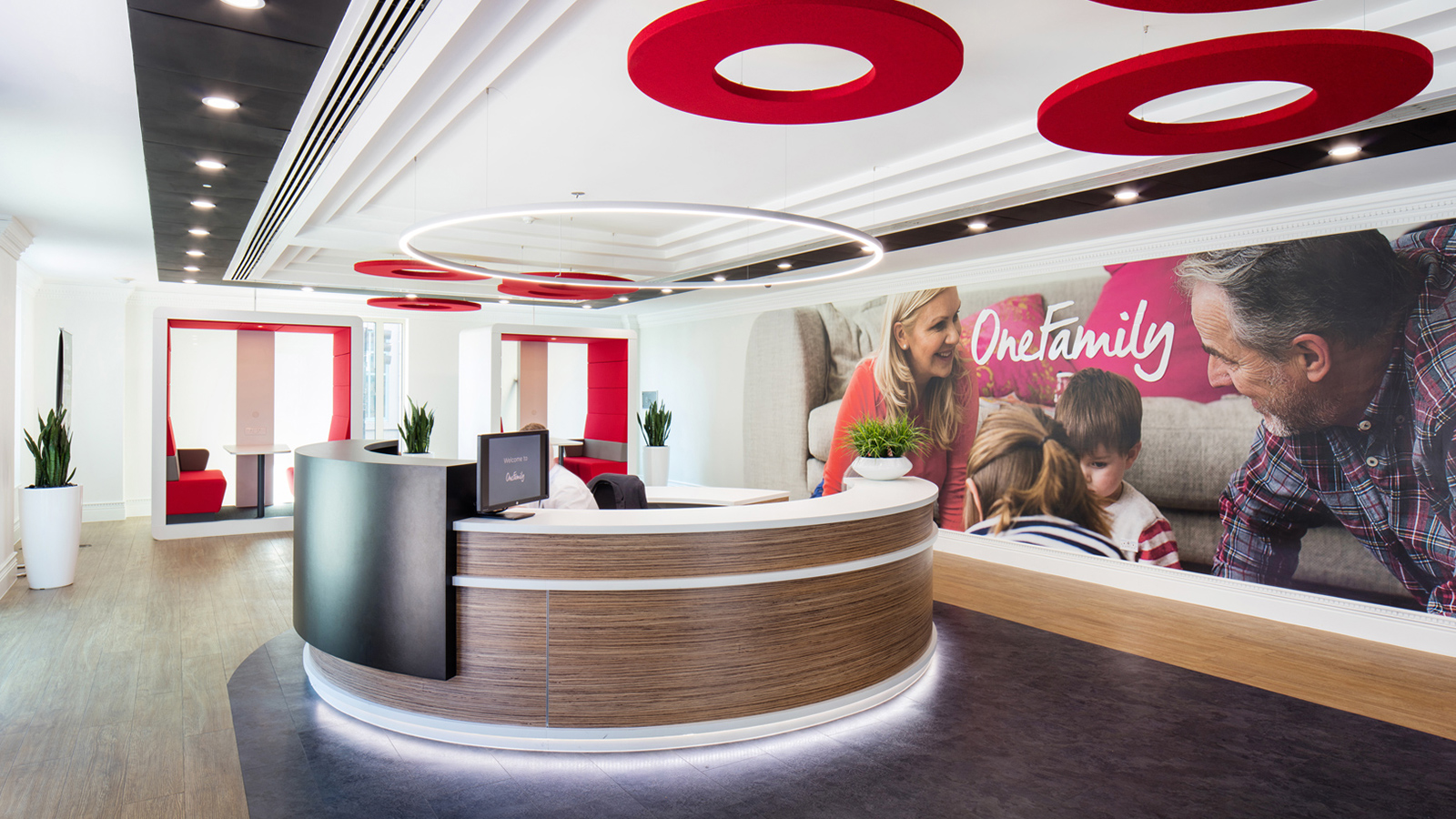
Traditionally, the personality model for business users is based on 16 character traits documented in the Myers-Briggs test. Taking inspiration from Carl Jung's theories on personality attributes, the Myers-Briggs test was originally conceived during World War 2 to help women joining the workforce to find suitable job roles that best fitted their personality.
The core principles of the Myers-Briggs test is still used today, but personality types have been diluted down to the five most dominant traits; extraversion, open-closed, conscientiousness, agreeable and neuroticism.
The latest psychometric model takes into account brain function trends identified in neuroscience studies and the five key factors of personality that most impact behaviour.
Attempting to design an office that enables every personality to thrive is impossible using traditional methods. The conception of activity-based working, on the other hand, creates a variety of work settings that supports the needs of individuals when they need it.
In effect, ABW is a people-centred office design which fits into the agile office model. It accommodates the fluctuation of workflows but also delivers personal preferences that are influenced by personality traits.
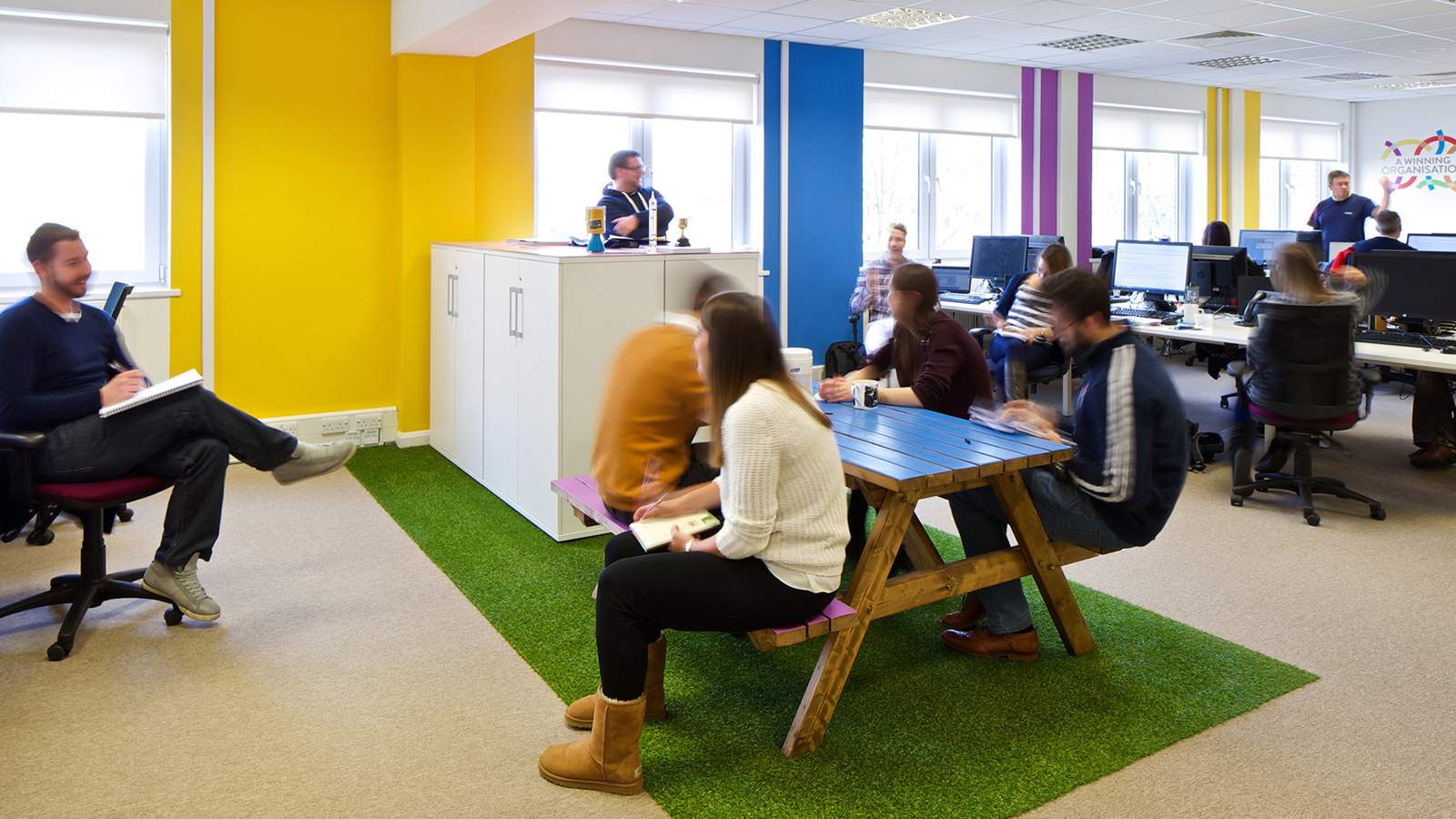
Extraversion deals with the extrovert versus introvert conundrum. Whilst the former thrive in collaborative spaces, the latter perform better in quiet environments where they have a place to think.
In the current paradigm, it is extraversion that is mostly dictating office design. The agile office, for example, encourages dynamic interactions between extroverts to brainstorm, discuss and innovate whilst accommodating introverts in quiets nooks.
Creative extroverts are full of energy and enjoy the robust exchange of ideas. Adaptable spaces where large groups can bounce ideas around is a rewarding stimulation for extroverts.
This personality type is also most likely to embrace the concept of mobile offices which encourage employees to move around. Companies that have embraced hot-desking are best suited to flexible individuals with the willingness to work in different locations. A change of scenery can inspire extroverts.
In contrast, introverts prefer personalised workspaces they are familiar with. This personality type tends to prefer traditional ways of working they are accustomed to. They are less open to changing environment so do not fit the fundamentals of the agile office model.
Dedicated desks seat introvert next to people they know and have a good working relationship with. Single-space offices or niches where they have time to think and focus also enables quieter types to be more productive and feel a sense of job satisfaction.
Creating spaces with extraversion in mind will form the basis of modern office designs. However, in-between spaces are also required to accommodate conscientious workers and neurotics.
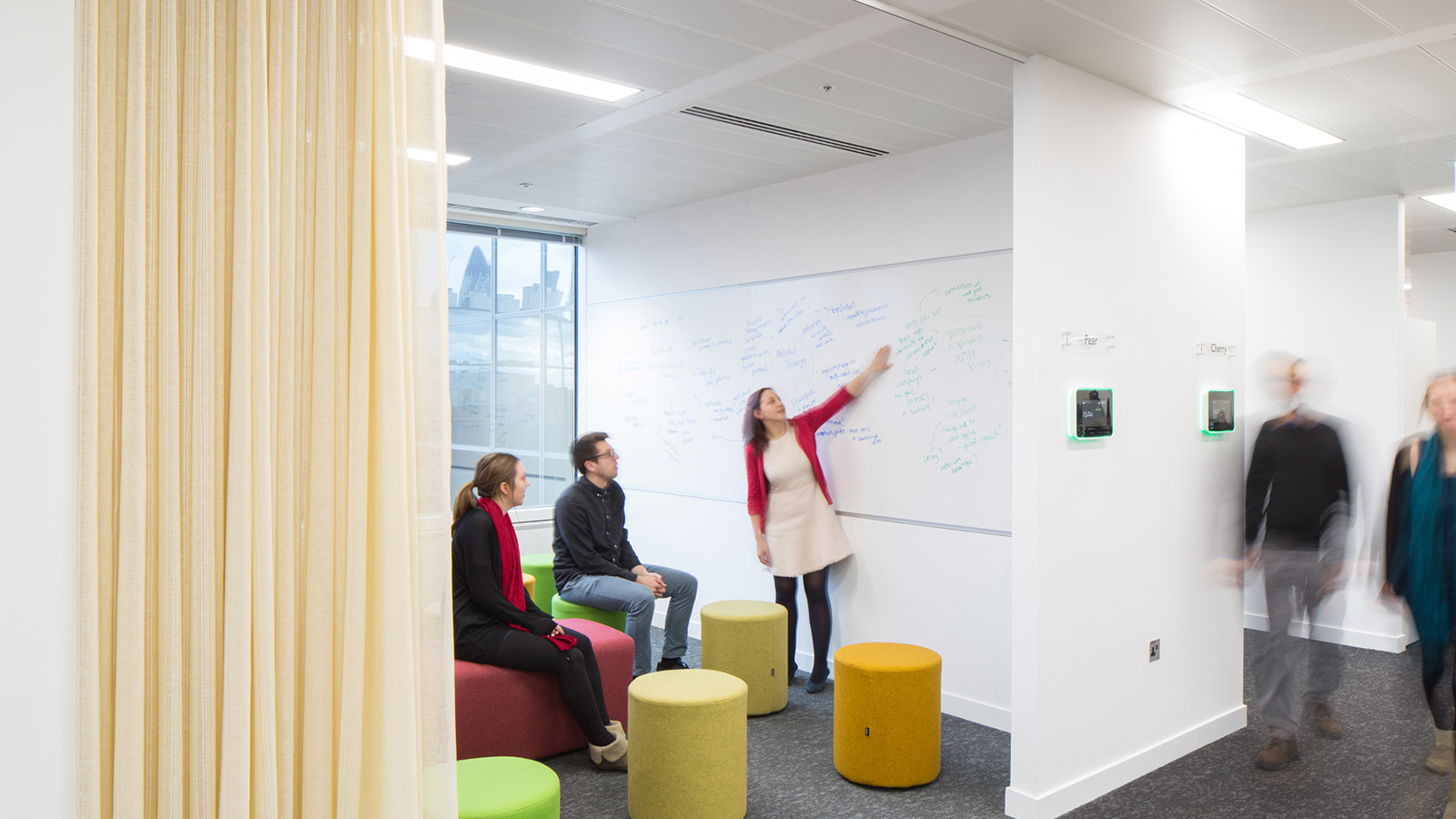
Individuals that are agreeable are, quite clearly, the easiest to please. However, because this personality type is co-operative and encourages social harmony, they are more susceptible to distraction in open-plan spaces.
Agreeable personality types are typically ambivert and fall somewhere in the middle of extroverts and introverts. They adapt easily, feel at ease with social interaction but also want quiet spaces where they can focus, rejuvenate and refresh.
Individuals that are open to experience, on the other hand, enjoy variety and change. They thrive in a flexible working space and tend to be more imaginative and creative.
Hanging thought-provoking artwork and posters with inspirational quotes are good for open-minded people. They appreciate visual cues and are sensitive to intricate design concepts.
They have a unique capacity for abstract thinking and are inspired by music, metaphors, mathematical equations and geometric shapes. Designs that incorporate the Fibonacci Sequence and harness the beauty of nature appeal to this personality type.
Conscientious personality types are also relatively easy to please. High scorers in this category often achieve strong performance results but require a setting that is conducive to productivity.
Because, at heart, they are perfectionists and motivated to deliver more than is expected of them, conscientious workers need to be well-prepared and organised. Dedicated desks where they know where everything is the preferred working environment.
This personality type, therefore, is best suited to a traditional setting where they feel most comfortable. Having the tools and files they need to hand enables them to be self-efficient and meet their targets. Their workspace is also tidy and presentable.
At the other end of the scale are the impulsive individuals. They are closely related to extroverts in that they can make snap decisions and act on impulse. In many instances, the most effective ideas are instantaneous.
However, impulsive people are easily distracted and socialise excessively. Whilst you want to encourage this personality type to collaborate, they will hit higher performance levels in a closed space.

Employees with neuroticism are arguably not the most sought-after, but studies have shown that conscientious neurotics can be an asset to a company.
The neurotic personality type is generally regarded as having negative emotions, anxiety and depression. Moreover, they do not handle stress very well.
An atypical neurotic finds it difficult to concentrate because they are ruminating about something or sweating over an email they just sent and can۪t relax. As a consequence, their performance suffers - which makes them even more anxious.
Yet whilst they tend to mismanage pressure and make poor decisions in stressful situations, people that suffer moderate levels of neuroticism are good at identifying threats, don۪t take risks, assume personal responsibility, and exceed expectations.
With this in mind, it۪s important to manage the neurotic personality by creating an environment they can function in. Allow them to thrive rather than a nosedive and you improve their performance.
Neurotics are very sensitive to environmental stimuli. Bright colours, high noise levels, busy spaces overwhelm the senses and impair cognitive function. When the senses of neurotics are overloaded, it invites stress and negatively impacts performance.
Employees with neuroticism need a balanced environment where they can have their own space but speak to co-workers they feel comfortable with. Enclaves, private rooms and cosy lounge corners are ideal for neurotics.
Like introverts, neurotics need to be encouraged to seek out places that enable them to focus and perform at their productive best. The conscientious neurotic will not let you down.
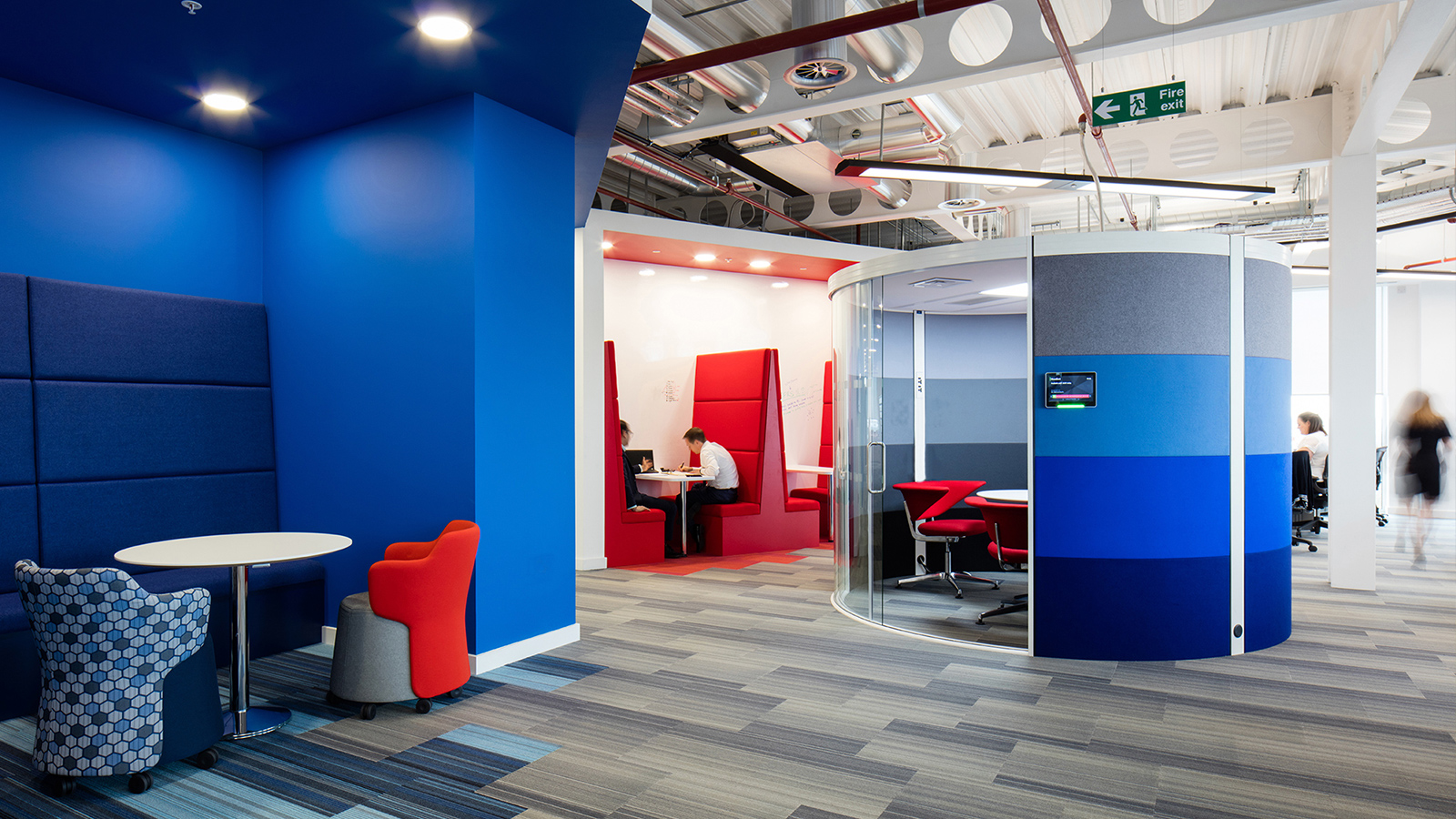
When considering office designs that are best suited to personality types, designers also have to consider psychological influences that affect space.
The amount of personal space individuals have in the workplace has a significant impact on performance, job satisfaction and general wellbeing. Indoor environmental quality (IEQ) which includes temperature, humidity, air quality, lighting, daylight and views to the outside all impact the overall comfort of employees.
If there is too little space, people can feel claustrophobic, stressed and limited. When colleagues are too spaced out, on the other hand, people feel disconnected and isolated.
A recent study in the Netherlands revealed a strong correlation between spatial layout and workplace design factors have a substantial impact on user satisfaction.
In the past, office interiors were assembled to satisfy the practical objectives of the business. Whilst operations are still at the forefront of an interior designer۪s thinking, the layout of an office has a significant impact on employee satisfaction.
Spatial density has a significant influence on perception and cognitive ability in the workplace. The optimum amount of space for each employee is estimated to be around eight square metres per person.
People also feel more crowded in offices that do not have an external view. In offices with low spatial identity, large windows or full-scale images of nature compensate for the perception of feeling closed in.
Studies have also shown that individuals in single-occupancy workspaces are higher when there is an outdoor view to help refresh the mind and restore concentration levels.
Allowing natural light to flood into the office is a positive step to cultivating health and wellbeing, but it۪s also important to include features that prevent glare and increase high temperatures in the summer.
Because agile offices incorporate a variety of workspaces, designers also have to consider seasonal changes. The weather impacts the orientation of an office layout and design features have to take into account visual and thermal comfort together with energy-efficiency.
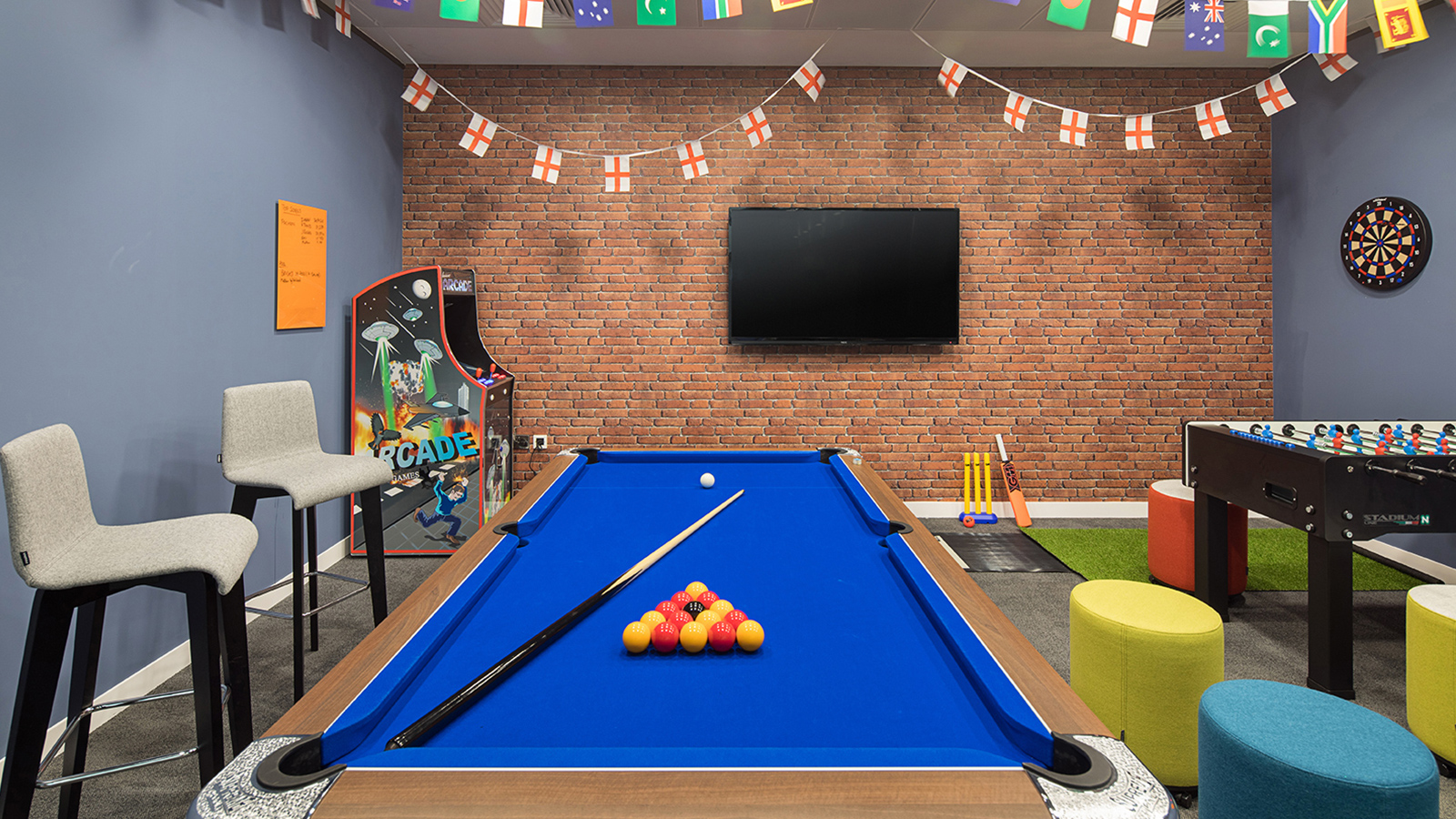
A report published by Cabe addressing the impact of office design on business performance determines that a mere 2-5% increase in employee performance will cover the cost of an agile office fit.
Creating a variety of workspaces that accommodate the needs of the Big 5 personality types is key to improving job satisfaction and ultimately productivity.
The focus to establish social areas and stimulate interaction between employees has been reinvented. Modern office designs maintain the principles of open-plan offices but also incorporate traditional layouts that support workers when they need to focus their concentration.
Outdoor spaces that offer a quiet escape are also ideal for neurotics, together with introverts and agreeable personality types. Environments which allow people to take a break from work and relax the mind helps them feel rejuvenated and more focused when they return to their desks.
The concept of recreational spaces where extroverts can recharge in a socially engaged environment is also gaining traction. Although mini-golf courses and pool tables may blow your budget, there are plenty of low-cost recreational areas businesses can incorporate into an office deign to satisfy extroverts.
To ensure you find the right workplace balance, consult experienced interior office designers that understand how space impacts cognitive behaviour in people with different personalities. Office design is a major step to improving employee satisfaction and increased productivity - so it۪ worth your while getting it right!